Understanding the Distinct Roles of Brain Hemispheres
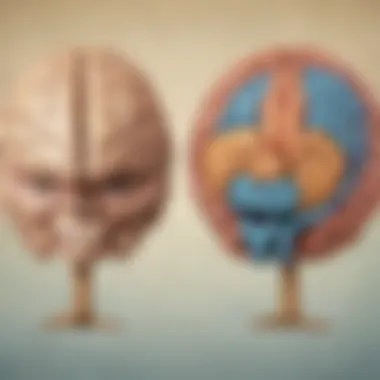
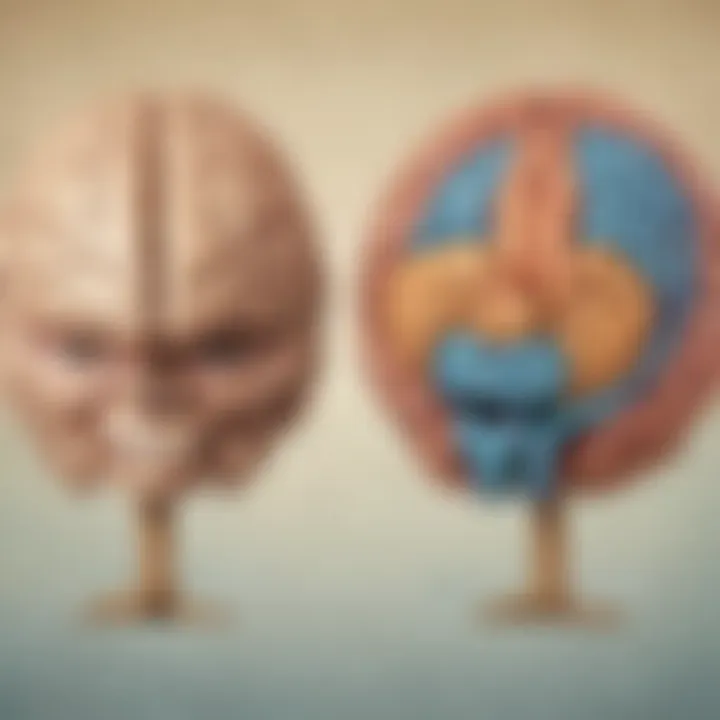
Intro
The human brain is a complex and fascinating organ. It serves as the control center for all our thoughts, emotions, and actions. Each side of the brain has its unique functions, and understanding these differences provides valuable insights into how we think and behave. People often hear phrases like "I am more left-brained" or "he is a right-brain thinker". These statements reflect an interest in knowing how the left and right hemispheres influence our personalities, skills, and learning styles.
Science Fun Facts
Here are some interesting facts about the brain's two hemispheres:
- The left hemisphere is typically associated with logical thinking, analytical skills, and language processing.
- The right hemisphere is linked to creativity, intuition, and artistic abilities.
- Each hemisphere communicates with the opposite side of the body; the left side of your body is controlled by the right brain and vice versa.
- Not everyone fits perfectly into the left or right brain categories; most people use both hemispheres to varying degrees.
Interesting Trivia and Facts
- Did you know that the left hemisphere is often dominant for 90% of right-handed people? This means they use their left side more for tasks like speaking and writing.
- Research has shown that the right hemisphere often plays a role in understanding emotional tone and facial expressions, which can enhance social interactions.
"The left and right hemispheres are not in competition but rather work together to help create a holistic understanding of our experiences."
Quirky Science Stories
One quirky story involves the famous case of Phineas Gage. After an accident that damaged his frontal lobe in the left hemisphere, he exhibited dramatic changes in personality. This highlighted the role of specific brain areas in shaping behavior.
Amazing Science Records
Some remarkable research records show how EEG (electroencephalogram) technology can track brain activity. It reveals the way brain waves differ between tasks that engage one hemisphere more than the other.
Thought-Provoking Questions
- How do these differences manifest in our daily lives, and can this understanding help us improve learning in schools?
- What implications might this have for children with learning differences?
Discover the Wonders of Science
Exploring the scientific concepts behind brain function enriches understanding. The fields of neurology and psychology provide insights into how brain lateralization affects us.
Exploring Various Scientific Concepts
Scientists have studied how the two hemispheres process information. The left focuses on details, while the right looks at the whole picture. This can explain why some individuals excel in science and math while others shine in arts.
Educational Videos and Animations
Videos on platforms like YouTube explain these functions visually. They depict how each side of the brain influences different tasks.
Interactive Learning Tools
Using games that challenge logical versus creative thinking can provide practical examples for children, making learning engaging and fun.
Real-Life Applications of Science
Understanding the left and right brain functions can help educators customize lesson plans. They can consider students' unique learning styles, whether analytical or creative.
Science Quiz Time
Interactive Quizzes
Quizzes can test knowledge about brain functions, making learning enjoyable. Engaging students with fun questions can spark their interest in science.
Multiple Choice Questions
- Which side of the brain handles language?
- What type of tasks does the right hemisphere excel in?
- A) Left
- B) Right
Correct Answer: A) Left
- A) Mathematical problems
- B) Artistic tasks
Correct Answer: B) Artistic tasks
Brain Teasers and Puzzles
Puzzles that engage both logical and creative thinking can illustrate how both sides work together in problem-solving.
Learning Through Gamification
Using gamification strategies can enhance the learning experience related to brain functions. This encourages children to explore both logical analysis and creative expression.
Prelims to Brain Hemispheres
Understanding the brain is an essential part of grasping human behavior and thought processes. The left and right hemispheres of the brain each have unique functions that play a significant role in how we think, learn, and interact with the world. By delving into the nuances of these hemispheres, we can uncover insights about not only cognitive abilities but also personality traits and learning preferences. This exploration is particularly valuable for educators, parents, and caregivers seeking to foster optimal environments for learning and emotional development.
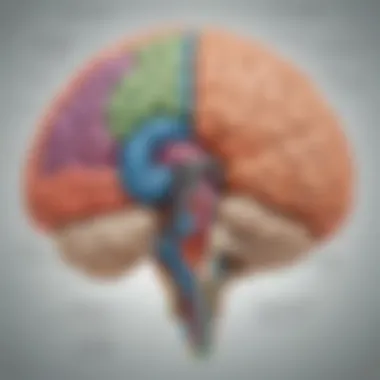
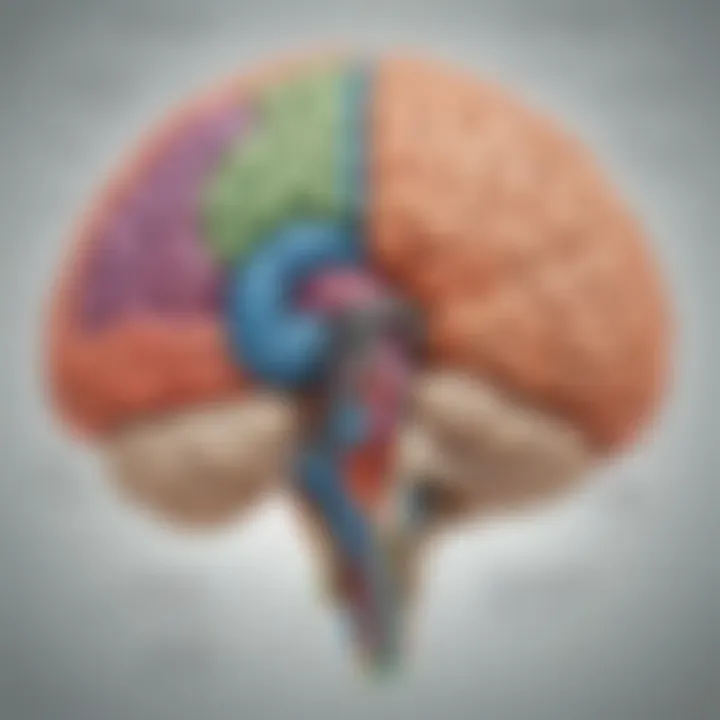
Overview of Brain Anatomy
The human brain is divided into two hemispheres: the left and the right. Each hemisphere has distinct structural and functional characteristics. The left hemisphere, often associated with analytical and logical thinking, houses centers crucial for language processing and mathematical skills. Conversely, the right hemisphere is linked with creativity, artistic abilities, and spatial awareness. Each hemisphere communicates through a bundle of nerves known as the corpus callosum, which facilitates the exchange of information between them.
Here are some key components of brain anatomy:
- Cerebral Cortex: The outer layer involved in higher cognitive functions.
- Limbic System: Part of the brain that manages emotions and memories.
- Brainstem: Supplies basic life functions, including breathing and heart rate.
Definition of Lateralization
Lateralization refers to the specialization of certain functions in either the left or right hemisphere of the brain. This phenomenon explains why one side of the brain may dominate in specific cognitive tasks. Lateralization is not absolute; rather, it highlights a propensity of functions toward one side that is generally observed in individuals. For instance, many people display left-lateralized functions related to language, while spatial abilities may show right-lateralization.
The significance of understanding lateralization lies in its implications for learning styles and strategies. Recognizing that individuals may favor one hemisphere can help in tailoring educational approaches that align with their cognitive strengths and preferences. As we explore further into the roles of both hemispheres, it becomes clear how this specialization influences various aspects of life and learning.
Structural Differences
The structural differences between the left and right hemispheres of the brain are fundamental to understanding how each side contributes uniquely to behavior and cognition. Each hemisphere has distinct physical characteristics and neural connections that make their functions different. Recognizing these differences offers valuable insights into various aspects of learning, personality, and even societal roles. By appreciating structural differences, we can understand why individuals may think or behave differently based on which hemisphere may be more dominant or engaged in a specific task.
Physical Attributes of Each Hemisphere
The left and right hemispheres differ not only in function but also in physical attributes. For example, the left hemisphere is generally smaller and more compact compared to the right hemisphere, which is often larger and more spread out. These differences contribute to varied processing capabilities. The left side is often associated with linear and analytical thinking, while the right side may excel in holistic and spatial processing.
Here are some key physical attributes that distinguish the two hemispheres:
- Size: The left hemisphere is often more dedicated to functions related to language and logic, leading to its compact structure.
- Shape: The right hemisphere is typically more rounded, which aids in processing complex visual information and emotional content.
- Surface Features: The folds or gyri on the brain's surface may also differ in density and pattern, linked to the hemisphere's primary functions.
Understanding these physical attributes is crucial because they illustrate the brain’s adaptability and specialization in cognitive tasks.
Neural Connectivity Patterns
Neural connectivity within the brain's hemispheres is another essential factor that highlights their differences. Each hemisphere has unique pathways and networks that facilitate communication among neurons. The left hemisphere tends to have increased connectivity between regions geared towards language skills. This focus allows for effective language comprehension and usage.
In contrast, the right hemisphere develops broader connectivity that better supports creativity and intuition. This pattern fosters skills in spatial reasoning, emotional regulation, and artistic abilities.
Several notable aspects of neural connectivity include:
- Inter-Hemispheric Communication: The corpus callosum connects the two hemispheres, allowing information to be shared and integrated. However, the pathways can differ significantly in density between individuals.
- Functional Connectivity: Recent studies show that the left hemisphere often exhibits functional networks that support tasks involving logic and analysis. The right hemisphere networks are often engaged during creative and emotional tasks.
The way these neural networks are structured has implications for educational strategies and personal development. By understanding connectivity patterns, individuals can leverage their cognitive strengths effectively.
Research indicates that brain plasticity allows for changes in neural pathways, depending on experience and learning. This flexibility is crucial in adjusting to different cognitive demands.
Functional Specialization
Functional specialization is a critical concept in understanding how the left and right hemispheres of the brain operate. Each hemisphere has its own distinct functions. Recognizing these specialized roles can help in various fields, including education, psychology, and even personal development. The left hemisphere generally handles tasks that involve logic, analytical thinking, and language. On the other hand, the right hemisphere is linked to creativity, intuition, and spatial awareness. This specialization has implications for how individuals learn and interact with the world.
Language and Logic: Left Hemisphere
The left hemisphere of the brain plays a significant role in language processing and logical reasoning. It is responsible for tasks such as reading, writing, and verbal communication. When we speak or listen to others, it is usually the left hemisphere that is activated. This part of the brain is also prominent in activities that require critical thinking and analysis.
Some key functions associated with the left hemisphere include:
- Language comprehension: Understanding grammar, vocabulary, and context in spoken and written language.
- Mathematics ability: Performing calculations and solving problems.
- Detail orientation: Focusing on specific parts of information rather than the whole picture.
For children, understanding their learning style can facilitate better communication. Students who are left-brained may excel in subjects that require analysis, such as math or science. Thus, educators can tailor teaching methods that complement these preferences to enhance learning outcomes.
Creativity and Spatial Awareness: Right Hemisphere
Contrastingly, the right hemisphere is associated with creativity and visual-spatial skills. It tends to engage in holistic thinking, which allows individuals to see the bigger picture and make connections between concepts. This hemisphere is activated when a person engages in artistic activities, such as painting or music.
The right hemisphere’s contributions include:
- Creative thinking: Generating original ideas and solutions.
- Spatial recognition: Understanding relationships between objects in space.
- Intuition: Using gut feelings to make decisions rather than relying on logic alone.
Recognizing these characteristics is essential for nurturing creativity in children. Educational strategies that promote artistic expression or imaginative play can be advantageous for right-brained learners. Likewise, it creates balance in their overall development.
"Understanding the distinct functions of each hemisphere can optimize teaching methods and enhance learning experiences for diverse learners."
Ultimately, grasping the distinctions between the left and right hemispheres can lead to more effective educational practices and a deeper comprehension of human cognition.
Cognitive Processes Involved
Understanding cognitive processes is essential when we examine how the left and right hemispheres of the brain operate. Each hemisphere contributes uniquely to our thinking patterns, influencing our learning and behavior. This section will delve into two primary cognitive processes: analytical thinking and holistic processing. Both processes are vital in educational contexts and personal growth.
Analytical Thinking
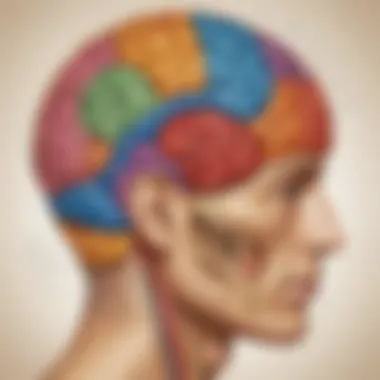
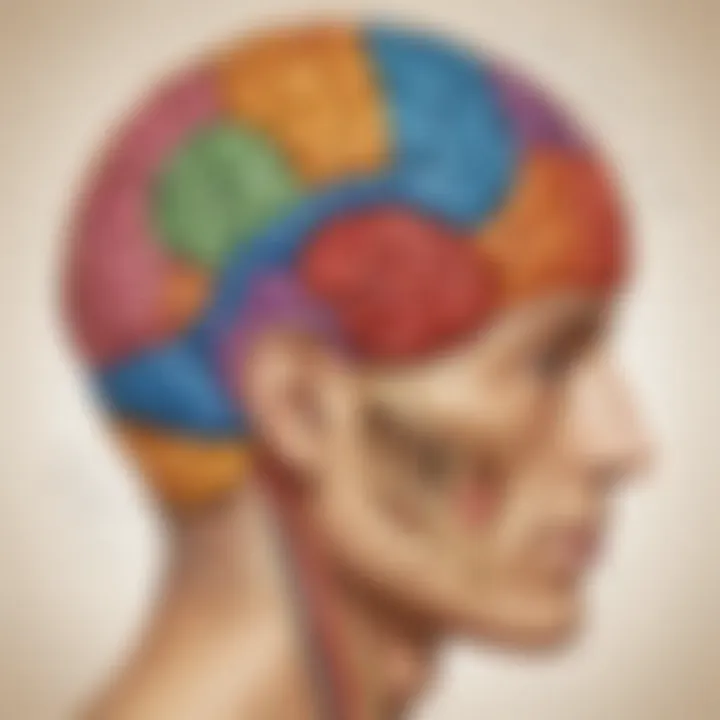
Analytical thinking is predominantly associated with the left hemisphere. It refers to the ability to break down complex problems into smaller, manageable parts. This process involves logical reasoning and methodical problem-solving. When children engage in analytical tasks, they learn to approach challenges in structured ways.
Some characteristics of analytical thinking include:
- Attention to detail: Left-brained individuals often focus on specifics and rules.
- Sequential reasoning: They excel in identifying patterns and following stepwise procedures.
- Mathematical skills: Strong abilities in subjects such as math and science are common.
- Language proficiency: This type of thinking supports reading and writing skills.
Encouraging analytical thinking in children can have multiple benefits. It helps develop critical thinking skills, which are necessary for academic success. Engaging in activities like puzzles or logical games can promote this type of cognitive process. Parents and caregivers can create an environment where these skills can flourish, leading to enhanced performance in various subjects.
Holistic Processing
Holistic processing, on the other hand, is primarily linked to the right hemisphere. This cognitive process involves viewing situations comprehensively, integrating various elements into a cohesive understanding. People who excel in holistic thinking often see the big picture, instead of getting lost in details.
Key traits of holistic processing include:
- Creativity: Right-brained thinkers often approach problems with innovative solutions.
- Intuition: They rely on their instincts to make decisions.
- Spatial awareness: This cognitive trait aids in understanding physical spaces and relationships between objects.
- Emotional insight: Right-brained individuals might have greater empathy and emotional understanding.
Promoting holistic thinking can enhance a child's creativity and adaptability. Engaging them in activities like arts and crafts can stimulate this thought process. By creating a balanced approach to learning, parents can support both analytical and holistic skills, aiding overall development.
"Understanding both analytical thinking and holistic processing provides a comprehensive view of how individuals approach various tasks, promoting well-rounded cognitive development."
In summary, both analytical thinking and holistic processing are crucial for cognitive development. Recognizing their distinct functions allows educators, parents, and caregivers to tailor learning experiences. By fostering skills from both hemispheres, we can better equip children for future academic and life challenges.
Implications for Learning Styles
Understanding how the left and right hemispheres of the brain function is crucial for grasping how different learning styles are formed. Each hemisphere has its own set of characteristics that influence how individuals absorb, process, and apply information. Recognizing these differences is important for educators, parents, and caregivers as it allows them to tailor their teaching approaches and support the unique learning needs of children. This alignment can enhance engagement in the learning process.
Left-Brained Learning Characteristics
Left-brained learners tend to excel in structured, analytical environments. These individuals often show strength in:
- Logical reasoning: They approach problems systematically and often excel in math and sciences.
- Verbal skills: This group tends to have stronger language skills and enjoys reading, writing, and participating in discussions.
- Sequential processing: Left-brained learners prefer information presented in a step-by-step manner. They thrive on organization and clarity.
Parents and educators can support left-brained learners by providing clear instructions, systematic lessons, and opportunities for logical reasoning exercises. Strategies such as encouraging them to keep organized notes or engage in debate can facilitate effective learning.
Right-Brained Learning Characteristics
In contrast, right-brained learners often flourish in creative and experiential settings. Their strengths include:
- Creative thinking: They are good at imagining possibilities and enjoy subjects such as art and music.
- Spatial awareness: Right-brained learners understand how objects relate to one another and often excel in physical activities.
- Intuitive processing: They tend to grasp concepts as a whole rather than focusing on individual details.
To aid the learning of right-brained children, parents and educators might incorporate hands-on projects, artistic expression, and teaching through stories or metaphors. This can help make learning more vibrant and relatable, allowing these learners to connect deeply with the material.
It is essential to recognize that most people exhibit traits from both hemispheres, resulting in a spectrum of learning styles.
Offering tailored strategies for both left and right-brained learners can lead to a more effective learning environment. Encouragement of both analytical and creative activities should be integral in educational settings, allowing every child to reach their full potential.
Personality Traits Associated with Each Hemisphere
The left and right hemispheres of the brain do more than just control different sides of the body. They also influence personality traits and behaviors in complex ways. Understanding these traits helps in comprehending how people think, learn, and interact with the world around them. The exploration of personality traits associated with each hemisphere provides significant insights into effective communication, teamwork, and educational approaches. It helps to appreciate individual differences and promote tailored strategies to nurture each person's strengths.
Traits of Left-Brained Individuals
Individuals who predominantly use their left hemisphere tend to exhibit specific personality traits. They are often characterized as logical, analytical, and detail-oriented. This tendency can manifest in various ways:
- Logical Reasoning: Left-brained individuals often approach problems systematically. They prefer structured solutions and rely on data to make decisions.
- Language Proficiency: Enhanced verbal skills are common among left-brained people. They excel in language use and often have a strong command of grammar and vocabulary.
- Organizational Skills: They typically value organization and planning. This organization helps them tackle tasks in an efficient manner.
- Concentration: Left-brained individuals may have a keen focus when learning technical subjects, such as math and science. They often enjoy subjects that require thorough examination and methodical thinking.
Traits of Right-Brained Individuals
In contrast, those who lean towards right-brain thinking display unique personality traits. They are frequently seen as creative, intuitive, and big-picture thinkers. Their traits include:
- Creativity: Right-brained individuals often possess imaginative capabilities. They think outside the box and generate innovative ideas.
- Emotional Intelligence: Many right-brained people have a strong connection to their emotions. They are often in tune with others' feelings, making them empathetic listeners.
- Visual-Spatial Skills: They excel in areas that require visual literacy, such as art, music, or spatial awareness. This ability allows them to engage with complex visual information.
- Holistic Thinking: Right-brained individuals may be inclined to see the overall picture. They appreciate connections and relationships among various ideas and concepts.
Understanding these traits can help educators and parents foster an environment that respects individual learning styles.
By recognizing the characteristics associated with each hemisphere, educators can better tailor their teaching strategies. Parents can also encourage development in areas where their children may be less confident. This awareness of personality traits leads to a more inclusive and supportive learning environment.
Applications in Education
The understanding of brain lateralization has significant implications for education. Recognizing how the left and right hemispheres operate can enhance teaching methods and cater to diverse learning preferences. Tailoring educational strategies to fit the cognitive strengths associated with each hemisphere can improve student engagement and knowledge retention.
By exploring the distinct learning styles, educators can better facilitate an environment conducive to learning. It is essential to understand that diverse characteristics may vary among students. These differences can influence their grasp of subjects and learning approaches.
Tailoring Teaching Approaches
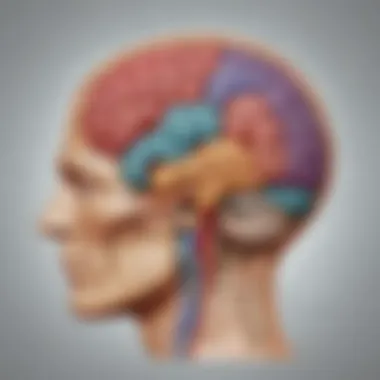
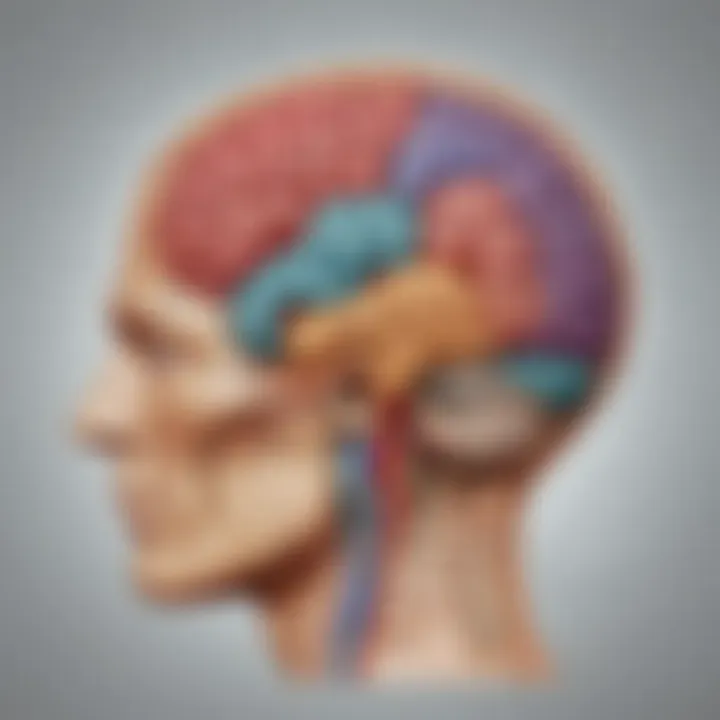
Applying knowledge of hemispheric functions can guide educators in effective teaching methods. For example, students who prefer analytical approaches often benefit from structured lessons that focus on logic and language skills. They may thrive in environments where facts and figures are emphasized.
On the other hand, students with a strong inclination towards creativity may succeed in more open-ended tasks. Art, music, and hands-on activities can support their learning. Such approaches include:
- Using projects that allow creative expression.
- Integrating visual aids to enhance comprehension.
- Offering group activities that foster collaboration and brainstorming.
By adjusting instructional strategies based on these insights, teachers can make lessons more engaging and responsive to the varied needs of their students.
Encouraging a Balanced Curriculum
Creating a balanced curriculum is key to accommodating different learning styles across the classroom. A curriculum that combines left-brain and right-brain tasks can support a more holistic educational experience.
A balanced curriculum might include:
- Analytical Subjects: Mathematics, Science, and Language Arts focus on logic and language skills that engage the left hemisphere.
- Creative Subjects: Arts, Music, and Physical Education encourage creative thinking and spatial abilities linked to the right hemisphere.
Furthermore, integrating cross-disciplinary projects can further enhance learning. For example, a science project may involve artistic presentations, which can bind together the fundamental strengths of both hemispheres.
An education system that values both hemispheres fosters a well-rounded intellectual development, preparing students for various challenges in life.
Through these practices, educators can harness the strengths of each hemisphere effectively. This allows students to explore their preferences while equipping them with versatile skills essential for future success.
Neurological Research Advances
Neurological research advances provide vital insights into the complexities of brain lateralization. This field has gained momentum in recent years, leading to better understanding of how the left and right hemispheres function. The knowledge gained from this research is crucial for educators, parents, and caregivers, offering evidence to support various teaching methods and learning styles.
Modern Techniques in Brain Imaging
Modern techniques have revolutionized how scientists study the brain. Methods such as functional magnetic resonance imaging (fMRI) and positron emission tomography (PET) allow researchers to visualize brain activity in real-time. These tools help to identify which hemisphere is more active during specific tasks. For example, while engaging in language exercises, the left hemisphere typically shows increased activity. On the other hand, when visual or artistic tasks are performed, the right hemisphere often takes the lead.
By using these advanced imaging techniques, researchers can observe the brain in action. This contributes to an evolving understanding of how different cognitive functions are compartmentalized within the hemispheres.
Recent Findings on Brain Functionality
Recent studies have yielded significant insights into brain functionality. Some findings challenge common notions of strict hemispherical divisions. It is now clear that both hemispheres work together for a variety of tasks. For instance, problem-solving often involves contributions from both sides of the brain. Researchers have found that individuals may even show variability in which hemisphere might dominate in particular situations, depending on their unique cognitive styles.
Furthermore, studies indicate that individual experiences influence brain functionality. Factors such as education, culture, and even personal interests can shape the degree of lateralization. This suggests that while there are general patterns in brain activity, personal variability is a strong consideration in understanding how we learn and process information.
"The brain doesn't fit into a simple left/right dichotomy. Individual experiences can lead to different functional foci within each hemisphere."
In summary, understanding neurological research advances enhances our awareness of the brain's structure and function. These findings are significant for adapting educational practices and addressing diverse learning needs.
Common Misconceptions
Understanding the common misconceptions about the left and right sides of the brain is crucial. Misbeliefs can shape how we perceive our capabilities and the capabilities of others. This section sheds light on key misunderstandings and their implications for our understanding of brain function.
Debunking the Left and Right Myth
Many people believe that the brain is divided strictly into two categories: the left hemisphere is logical and analytical while the right hemisphere is creative and emotional. While certain functions may be more prevalent in one hemisphere, this does not mean they are completely exclusive to one side. Research shows that both hemispheres work together in almost every cognitive task. For example, while language processing is often associated with the left side, the right side still contributes to understanding tone and context.
This myth creates a simplistic view of complex cognitive functions. By emphasizing a strict division, we risk overlooking the collaborative nature of brain activity. Cognitive tasks involve networks that span across both hemispheres. Understanding this can help alleviate self-imposed limitations based on perceived personality traits tied to brain lateralization.
"The brain is not a two-toned organ; it operates as a complex network, integrating contributions from both sides."
Understanding Individual Variability
Individual variabilities are vital to comprehend when talking about brain function. Each person's brain is shaped by diverse factors such as genetics, environment, and experiences. This means that cognitive processes can differ significantly from one individual to another, regardless of general trends associated with hemispheric dominance.
For instance, one might excel in spatial tasks typically linked to the right hemisphere without fitting into the stereotype of being a "right-brainer." Others might show balanced skills in both areas. It’s important to recognize that variation exists. When evaluating one's learning style or talent, it’s essential to consider a broader spectrum of abilities.
In educational settings, applying a one-size-fits-all approach based on lateralization can be counterproductive. Instead, recognizing the unique strengths of each individual leads to more effective teaching methods and promotes a more inclusive environment.
Closure and Future Directions
Understanding the differences between the left and right hemispheres of the brain serves as a crucial insight into how we think and behave. This article has explored several facets, from the structural variations to functional roles and their implications in education. The content provides a framework for educators, parents, and caregivers to better grasp how these differences can influence learning styles and cognitive functions. As the study of brain lateralization evolves, it is essential to stay updated on new findings that may challenge or reinforce existing knowledge.
Summarizing Key Points
The exploration of brain hemispheres reveals several critical points:
- Structural Differences: The brain's left and right hemispheres are not identical. Their unique physical attributes shape how they process information.
- Functional Specialization: Each hemisphere has primary roles, with the left being associated with language and logic, and the right with creativity and spatial awareness.
- Cognitive Processes: Different cognitive approaches emerge from each side; analytical thinking is typically left-brained, while holistic processing leans toward the right.
- Learning Styles: Recognizing distinct learning characteristics can enhance educational methods and engagement for students.
- Personality Traits: Individuals may display tendencies linked to either hemisphere, influencing their behavior and interactions.
- Common Misconceptions: It is vital to address misunderstandings surrounding the strictly assigned roles of each hemisphere.
Each of these points helps clarify the importance of balancing educational techniques and personal development to cater to both hemispheres.
Potential Areas for Further Research
Future research could explore several intriguing directions:
- Neuroplasticity: Investigating how brain areas adapt and change can reveal more about how learning can be maximized across both hemispheres.
- Individual Variability: More studies focusing on how personal experiences and backgrounds influence hemispheric dominance can uncover unique educational needs.
- Cognitive Rehabilitation: Exploring how understanding of lateralization can aid in rehabilitation strategies for stroke victims or those with cognitive impairments could provide practical applications.
- Technology Integration: Evaluating how modern technology, such as virtual reality, may enhance learning experiences utilizing knowledge about brain functions.
- Longitudinal Studies: Conducting long-term studies on children to observe how understanding brain development influences educational strategies over time.
By delving deeper into these aspects, professionals can hone their approach to education and personal development, ensuring it aligns with the science of how our brains work.







